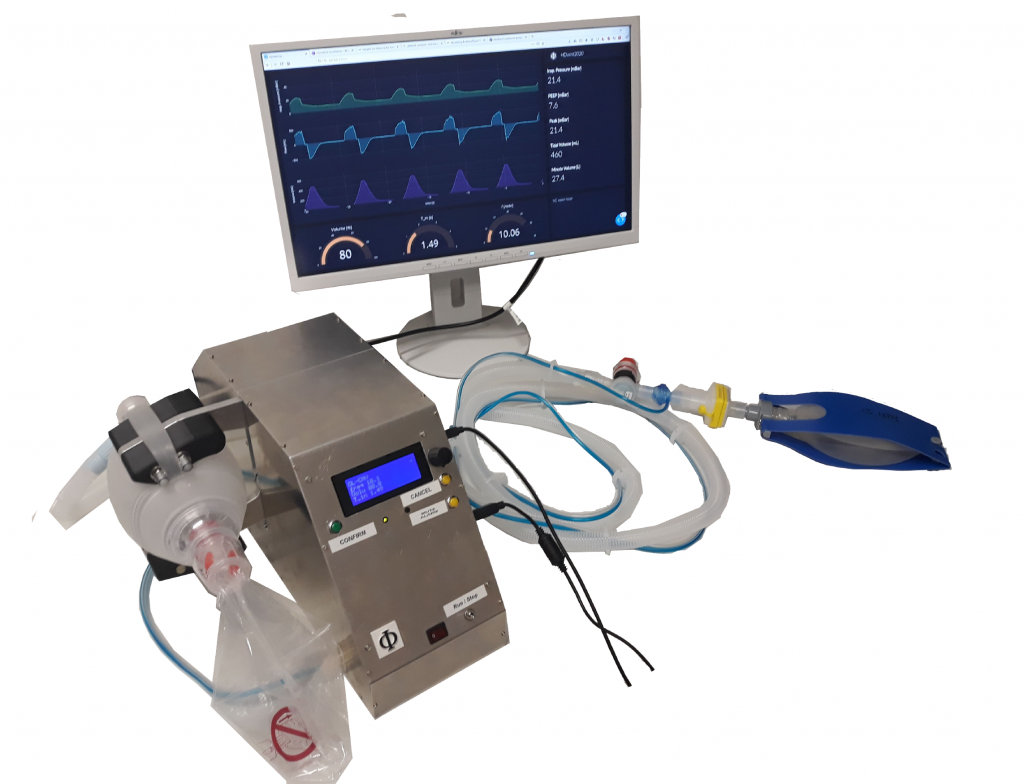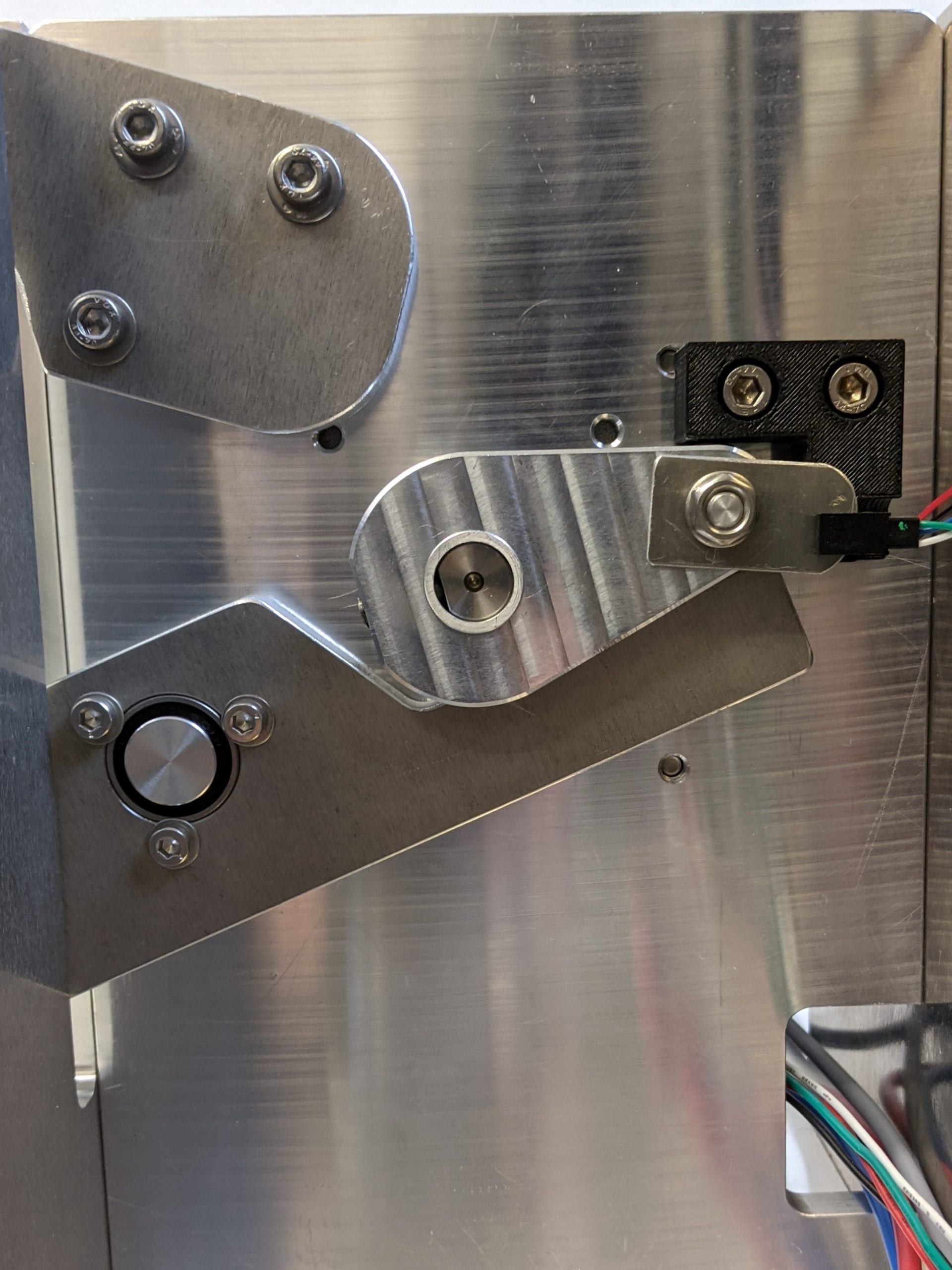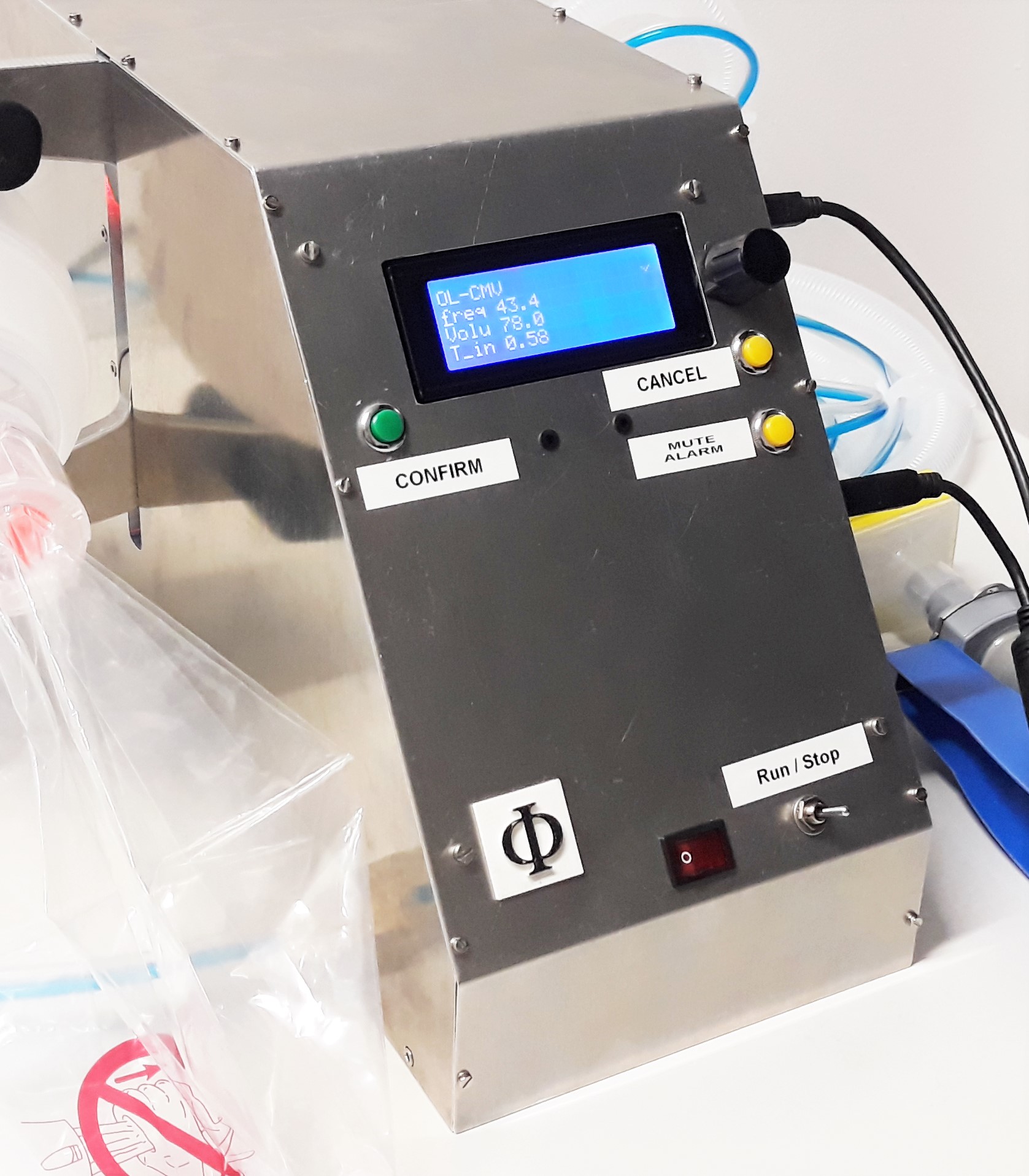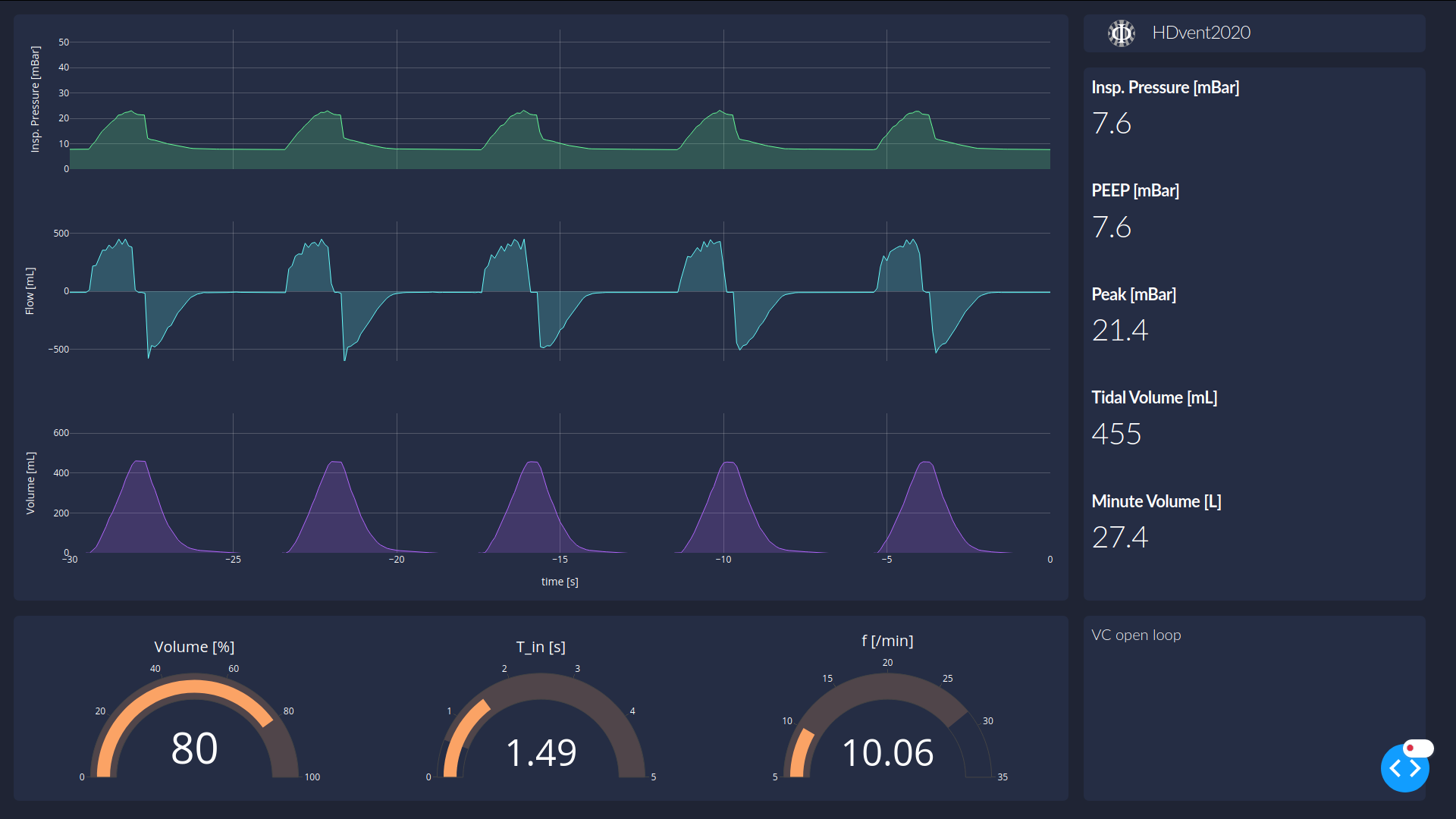The HDVent EmergencyVentilator System is a low-cost, emergency resuscitator for patients suffering from COVID-19.

The HDVent system was developed by a group of technicians, physicists, anesthesiologists from Heidelberg University, and IT professionals from Rommelag iLabs in Karlsruhe, in March 2020 to avoid a local emergency situation caused by coronavirus disease.
HDVent architecture
The air supply consists of an Ambubag connected to the intubated patient + standard valves.
On-board sensors measure the pressure and the in- and outflow rates near the patient mouth piece.
The Ambu is compressed between two mechanical arms shaped to reduce wear and tear effects.
The user interface provides easy access to and control over the ventilation parameters .
All electronics are implemented on a custom-made PC board mounted to the front panel.
A monitoring unit based on a Raspberry Pi computer displays volume and pressure time traces, settings and alarms.
HDVent concept
SIMPLICITY
compatible with mass production
requires only modest machining capabilities
DURABILITY
durable over several hundred thousand ventilation cycles
suited for ventilation over two weeks or more
EASE OF OPERATION
intuitive operation for medical staff or even untrained personnel
user errors prevented by design
COST
materials cost below 500 USD
suited for mass-scale production and developing countries,
An open-source project
The design is fully available here as an open-source project to help developers worldwide fight the worst impact of the coronavirus and future pandemics. We encourage interested developers to reach out for further details.
Warning: The materials on this website represent academic research and are intended for interested developers only. No clinical testing has been done and the device is not approved for patient use.
Do not use on human subjects.




